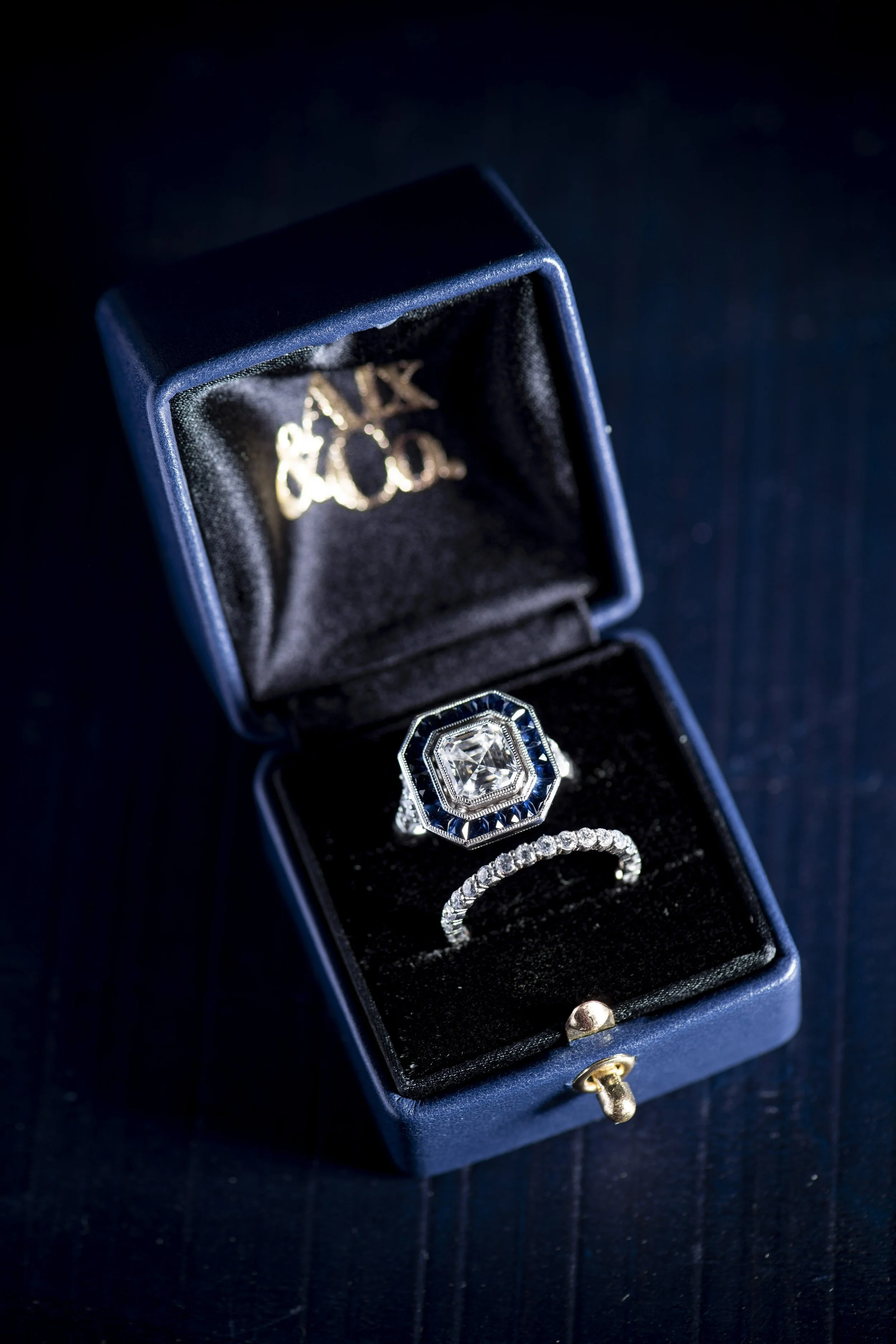Buying a Sapphire with Alx&Co.
I love sapphires and in so many ways I even prefer them to diamonds. From a gemologist’s perspective, walking through different sapphires with clients is a much more interesting process than with a typical round brilliant cut diamond search because there are so many more variables to go over between the stones. You’re looking for color and quality, of course, but also the depth of the stone, the way the color changes in different light, how uniformly saturated the color is, and how sparkly the sapphire appears. These variables are much harder to predict and control for without seeing the stones in person - much more so than with diamonds, where the ability to properly read a grading report can truly train you to pick a diamond sight unseen.
Sapphires are a popular choice for engagement rings for a very good reason: they are extremely durable, so you can generally wear your sapphire the same way you would a diamond without worrying about its likelihood to break. While sapphires aren’t nearly as hard as diamond, they are exceptionally hard and would surely last generations of wear with the right care. Consider this: over a lifetime of wear, a sapphire might develop some surface scratching and abrasions on the table in a way that a diamond usually won’t. You can remedy this by having your gemstone professionally polished before passing it onto the next generation of wear. That’s pretty good durability, if you ask me!
When searching for a sapphire, it’s important to remember to take heed of the distinction between a treated or untreated gemstone. The vast majority of sapphires on the market are heat treated in some way. Heat treatments can improve color tone by deepening a hue or unifying the saturation across the gem. They are permanent and do not harm the gem, so you as a consumer do not need to be wary of them. That being said, gem-quality untreated sapphires are significantly more valuable because of their rarity. When navigating the sapphire market, you will want to ask about treatments to get clarity on pricing and to compare those gems to similar-graded treated gems.
Origin
When I search for sapphires, I work with a select number of vendors who specialize in the colored gemstone market. We are able to source conventional natural sapphires as well as source origin-specific natural sapphires, such as Montana sapphires. Sometimes sapphires will have a clear point of origin noted, sometimes they don’t. If you are searching for a sapphire from a specific region or country, we are happy to do this.
Another fun fact is that sapphires come in a veritable rainbow of colors. Yellow sapphires are popular for their sunny hue, and purple sapphires are a great alternative for a pop of something different. And, did you know that sapphires and rubies are actually the same mineral? Corundum - the shared mineral classification - is a naturally white crystal that turns different shades depending upon which “impurities” (i.e., other elements such as nitrogen or aluminum) entering the crystal composition. When corundum is truly red - no pink hue! - it is called a ruby. If it has any pink undertone to it, is technically should be classified as a pink sapphire, not a ruby.
Alx&Co. Asscher Cut Diamond + French Cut Sapphire Ring
Sapphires also make wonderful accent stones for diamond rings. Many Art Deco designs included sapphire accents and they can serve as a way to add interest and shape to a diamond ring design. Because of their durability, they can be cut in many of the very small fancy shapes that diamonds can withstand, such as these fancy custom French cut sapphires we featured in this gorgeous Asscher-cut diamond ring we designed.



